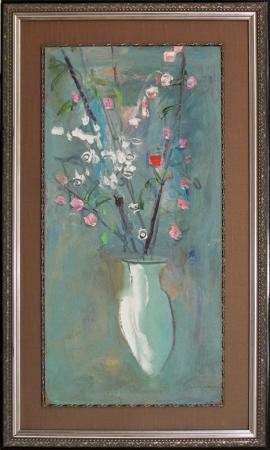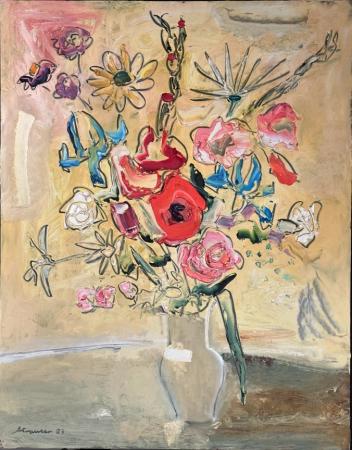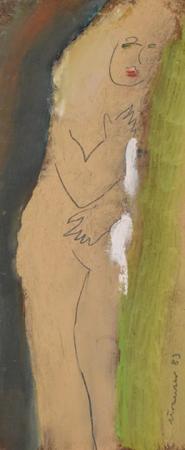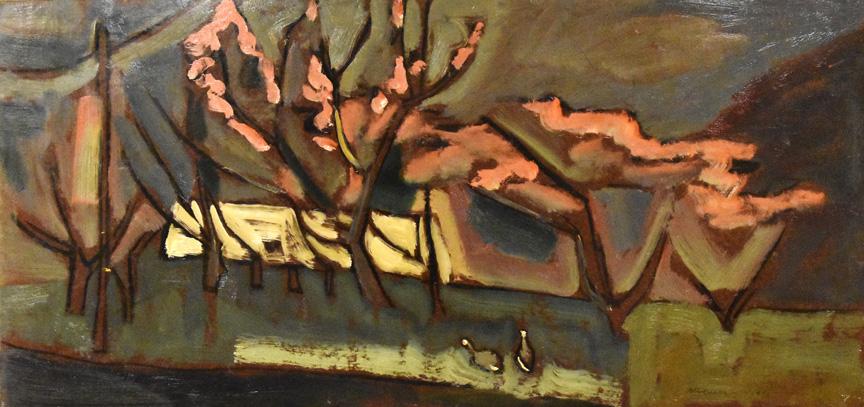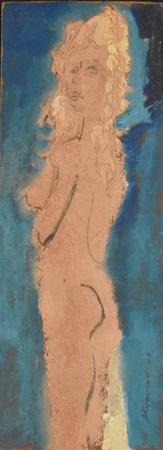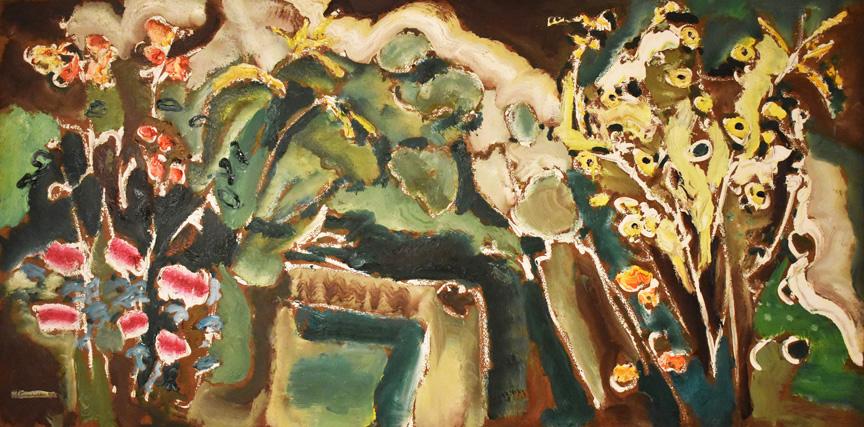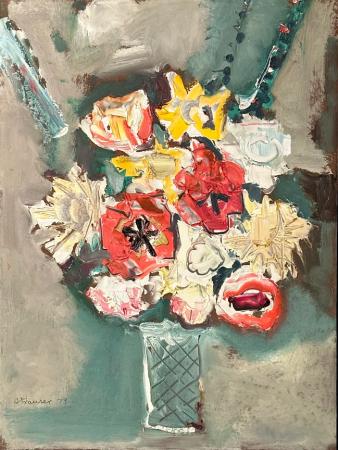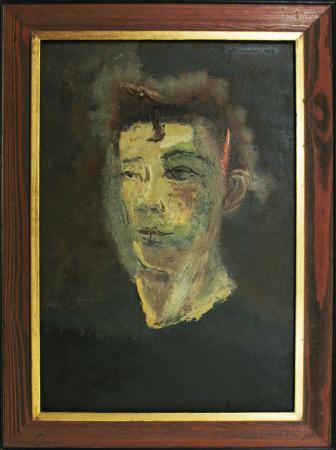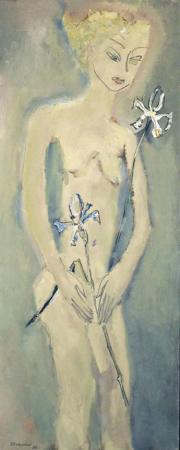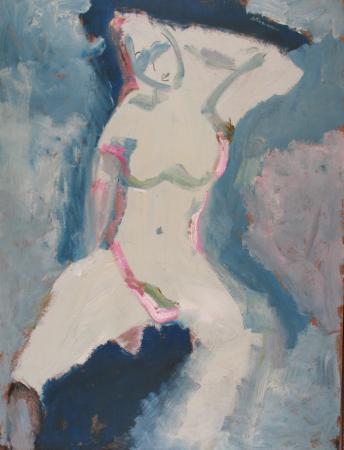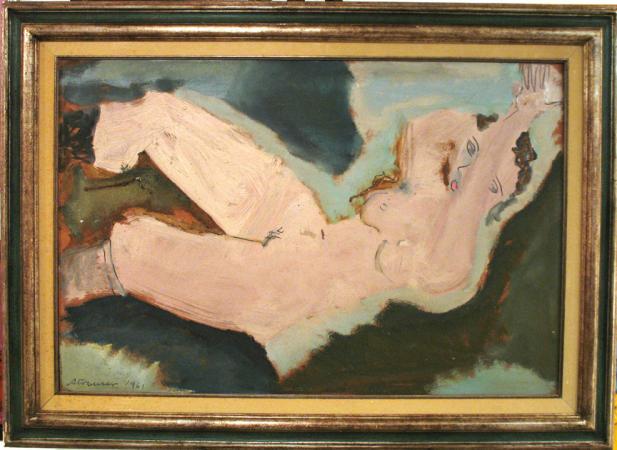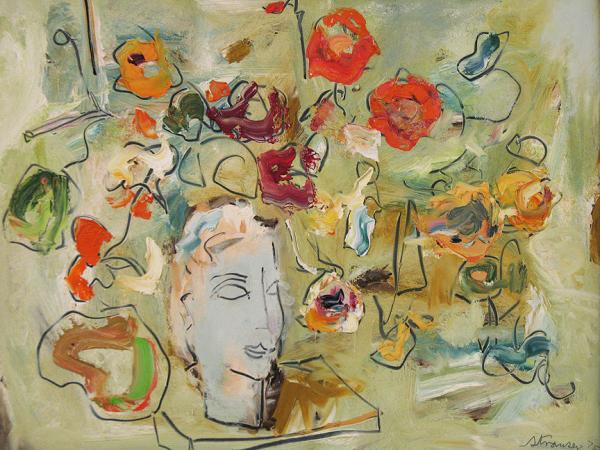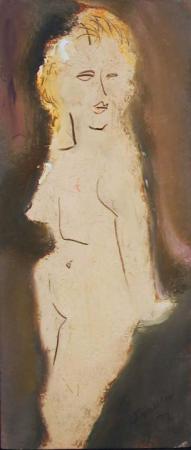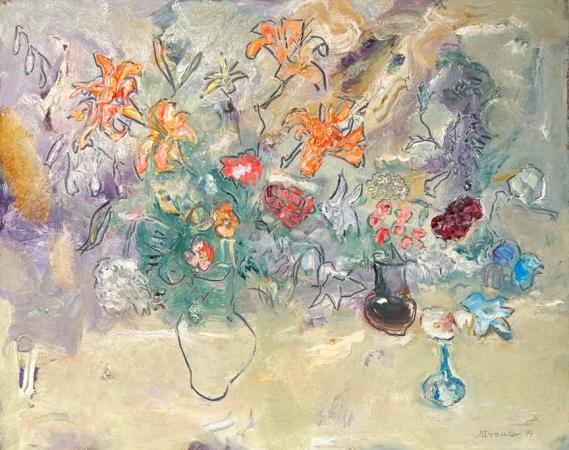Sterling Strauser
Sterling Strauser
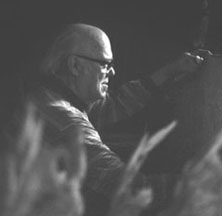
Sterling Strauser, was born in Bloomsburg, PA on August 15, 1907, the son of a railroader. His interest in art was kindled as a child by a gift of “colors” from an aunt.
He began painting seriously as a teenager and continued to paint almost daily until he died in 1995.
He attended Bloomsburg Normal to become a school teacher but found that he was unhappy and felt inadequate in that profession. He had no formal art training except
for a course to equip him to teach his students about art. Leaving this profession after a year, Strauser worked for thirty-two years at the International Boiler Works in
East Stroudsburg where he began as a clerk and retired as Secretary of the company. In the period 1928–1930 he supplemented his income as a picker for a local mailman,
Jack Chamberlain, who often sold to Albert Barnes, Edith Gregor Halpert, and Edgar Garbisch.
In 1934, he sent three small paintings to the 'Salons of America' show in Rockefeller Center. Two of the works he submitted were selected. Strauser then contacted
Marguerite Zimbalist about viewing his pieces for her gallery. Upon seeing his work, she agreed to give Strauser his own solo exhibition. This humble beginning
started a series of events that would move Sterling Strauser's unique work into prominence. He created art throughout his entire life that transcended all boundaries.
He later showed with Lee Nordness and The Little Studio Gallery. However, Strauser would not commit to being a “New York” artist and preferred to remain at
“home” in the Pocono Mountains. Nevertheless, he created art that attracted collectors throughout his lifetime and a circle of artist friends that included many outstanding
and notable artists of the 20th century such as close friends David Burliuk, Milton Avery, Nicolai Cikovsky, the Soyer brothers, Red Grooms and many others.
His works were promoted and sold throughout the nation through private dealers and especially thru the Lyzon Gallery in Nashville.
Der Blaue Reiter artist, David Burliuk, said of Strauser, “It is amazing to find a self-taught artist in a quaint little provincial village painting like the masters in the great
art centers of the world.” An art critic for Art News once referred to Strauser as the "spiritual descendant of Paul Klee." His eye for color combined with his opulent
strokes made him a major impressionist artist who contended "a painting has a personality all its own." The subject matter of his large collection of works covered
practically the entire spectrum. From unique floral still-lifes to dramatic social commentaries, Sterling Strauser's work has been labeled by one collector as
"romantic American expressionism" and he was called “the great momentalist” for his ability to capture a moment in time. Art collector and gallery director, Oscar Salzer,
used to say: “Strauser is second only to Redon." He was especially fond of his florals and often said, that in German his name is translated “one who binds the flowers,”
that is, one who makes bouquets.
Strauser gained a significant reputation as a collector, friend and patron of folk artists. He and his wife, Dorothy, a fine artist in her own right, discovered and
promoted several folk artists, including Gatto, McCarthy, Savitsky, Pry, and Dieter. Strauser’s appreciation for folk art began in 1935, on a visit to the John Law
Robertson collection of folk art at the Everhart Museum in Scranton, Pennsylvania. In 1942, Strauser, who was by then an inveterate collector, became intrigued by
a picture and caption in a tabloid about an artist who painted jungle scenes. Strauser wrote to the artist; the correspondence marked the beginning of a long relationship
with Gatto. Dorothy Strauser originally discovered Justin McCarthy’s expressionist paintings in 1960 at an annual outdoor art fair in Stroudsburg; Sterling Strauser
frequently likened McCarthy’s art to that of Emil Nolde. Strauser was also close to Jack Savitsky, a retired coal miner whom he met in the early 1960s. Strauser
constantly promoted these artists and was especially successful with regard to McCarthy and Savitsky. Strauser was also interested in Vestie Davis, whose work
he first saw at an outdoor exhibition in Greenwich Village in New York City. In 1990, Strauser participated in a symposium accompanying the exhibition
“The Cutting Edge: Twentieth Century American Folk Art” curated by Professor Barbara Cate and held of the Museum of American Folk Art (now the American
Folk Art Museum) in New York. Also accompanying the exhibition was the book Museum of American Folk Art Encyclopedia of American Folk Art and Artists by
Chuck Rosenak and Jan Rosenak, who dedicated it to the Strausers: “They taught us to see, and that seeing could be fun.”
His works went on to be in the permanent collections of the American Museum in Bath, Eng; the Everhart Museum in Scranton, PA; the Cheekwood Museum in
Nashville, TN; Lehigh University Museum in Bethlehem, PA; Vanderbilt University; and a number of corporate collections. From November, 1999 thru February, 2000
he was honored with a retrospective exhibition of his work, "A Modernist Revisited," held at the Reading Public Museum in Pennsylvania. A later exhibition,
"Sterling Strauser and Friends," was held at Belmont Univ. in Tennessee in 2001.
Sterling Strauser was a great American modernist artist.

